Chevrolet Suburban 75th Anniversary Event – Click above for high-res image gallery
Quick, what's the longest-running nameplate in the car business?
If you said Honda Civic, you deserve to be smacked upside the head with a four-inch exhaust tip – it's merely 37 model years old. The vehicle we're talking about is positively prehistoric by comparison. The Porsche 911? Wrong again, as it only predates the Civic by a decade. You're getting closer if you said the Ford F-Series, but still, FoMoCo didn't launch its best-selling pickup until 1948.
You've got to go all the way back to 1935 for the launch of the auto industry's Methuselah, the Chevrolet Suburban. That makes 2010 the 75th anniversary of the full-size SUV archetype. To celebrate, Chevy opened its vault on one of the Dog Days of August to let journalists drive a handful of vintage models.
It was something of a belated party, as GM stopped building 2010 model year Suburbans in June, including the special Diamond Edition model. But we're not going to complain about being given the opportunity to get seat time in eight of the ten historic "Caryall" generations. Model years 1936, 1946, 1951, 1966, 1972, 1990, 1999 and 2002 were on hand, most thanks to GM's Heritage Center.
We decided that the only proper way to approach the task was to drive back in history. This served well to highlight not just how much the Suburban has changed in recent model years, but how much the auto industry has evolved since the pre-war era. But it also showed how consistent the Suburban has been over all these years, offering eight-passenger capability in a roomy wagon body mounted on a heavy truck frame since its inception. History has shown this formula's a winner; Chevy estimates it has built between 2.25–2.4 million Suburbans in total.
Follow the jump for a taste of our experience driving the Suburban back in time to its beginning.
Ninth and Tenth Generation
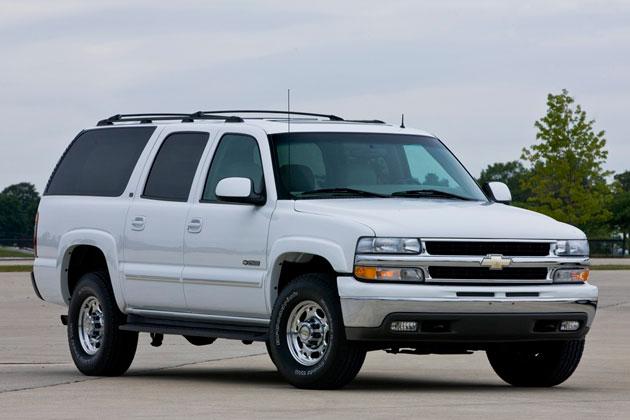
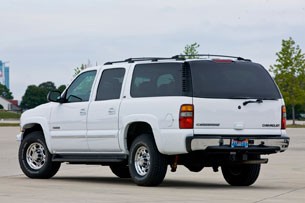
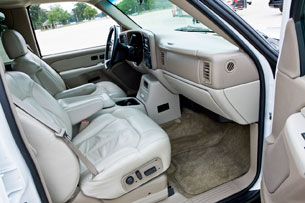
2002 Chevrolet Suburban
As you might imagine, there weren't a lot of surprises to be found in the 2002 or 1999 Suburban. Representing the ninth (1992-1999) and tenth generation (2000-2006), this pair was baked from fundamentally the same recipe as the current Suburban. You've got to give GM credit, as it really got it right when it introduced the 1992 model.
Eighth Generation
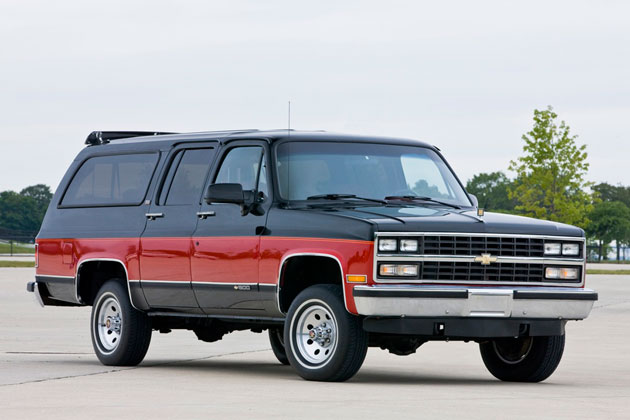
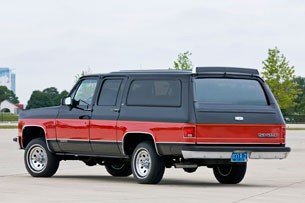
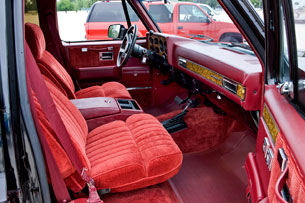
1990 Chevrolet Suburban
It was behind the wheel of the 1990 model that things got interesting. This is the Suburban that truly defined the breed, the eighth generation that was produced from 1973 through 1991. Yes, that's 18 years, meaning that this model served through five presidential administrations. It was the first Suburban to offer four doors, and the first to have a big-block V8 engine option, the 454-cid in 1973. The eighth-generation Suburban received plenty of upgrades over the years, as interiors were revised and the front end was restyled. A diesel was offered and engines became fuel injected in the late 1980s. Its base price quadrupled, from a mere $3,832 in 1973 to $16,720 in 1991. While this era of Suburban was the first to seem tame enough for everyday transportation when judged by modern standards – that having four doors thing really helps – by 1990 it was certainly a truly medieval vehicle, dated from the inside out.
Seventh Generation

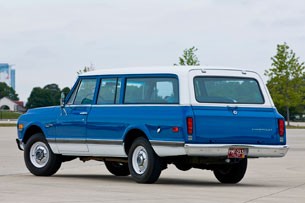
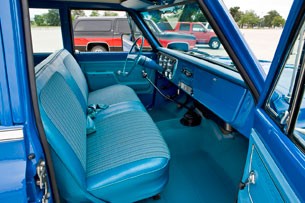
1972 Chevrolet Suburban
The 1972 Suburban was our favorite, with an interior that looks like it could have been pulled from a contemporary Impala, and a classy two-tone exterior. It drove like a vintage pickup, which is to say its three-speed manual transmission (with a "creeper" first gear) and over-boosted power steering was a not-unpleasant reminder that SUVs were once work vehicles, but it was still modern enough that we wouldn't hesitate to drive one in today's traffic. Surely you could keep up thanks to the classic Chevy 350-cid small-block V8, even if it was rated at just 175 horsepower. The 1967–1972 Suburban (the seventh generation) betrays the subtle attention to detail that defined the Bill Mitchell era of GM design, when the company could seemingly do no wrong. This was the generation of Suburban that introduced the three-door design (one on the driver's side and two on the passenger's side, like a van). It was also the first Suburban to assume more modern proportions, with a 127-inch wheelbase and 215-inch overall length.
Sixth Generation
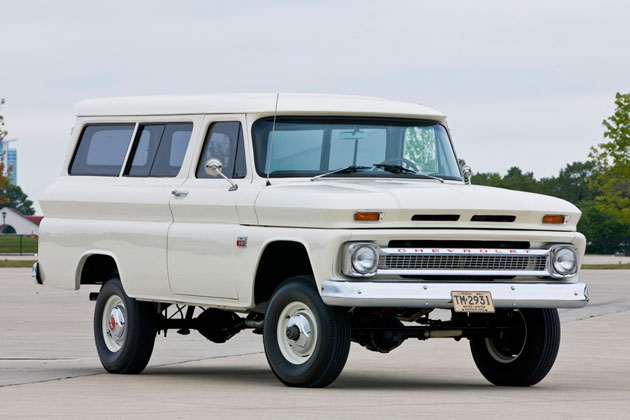
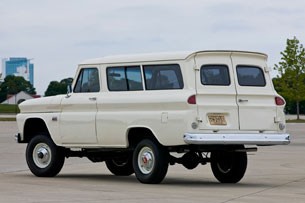
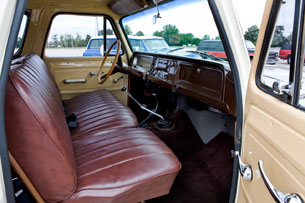
1966 Chevrolet Suburban
It was behind the wheel of the 1966 Suburban when things started to get a bit primitive. This was a two-door model, like all that preceded it, and it was noticeably smaller than the newer generations we'd already driven. Like other early 1960's vehicles (we're thinking mostly of the Corvette), this sixth generation of Suburban – produced from 1960–1966 – served as a transition for the nameplate. It's interesting to note that GM has no production records for the Suburban prior to 1963.
Fourth and Fifth Generation
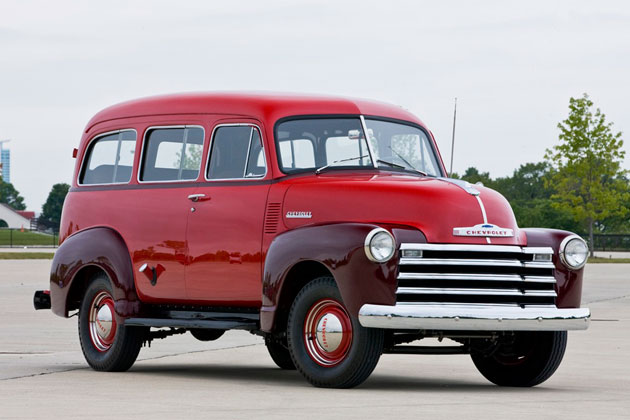
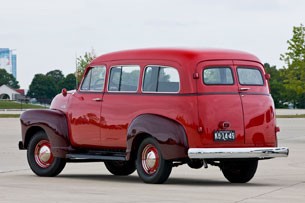

1951 Chevrolet Suburban
The fifth-generation Suburban was not represented, but Chevy did have a fourth-generation 1951 model there to show off what the vehicle looked like in the immediate post-war period (1947-1954). This was the first model that seemed overly antique, thanks to its 92-horsepower "Stovebolt Six" with a "three-on-the-tree" manual transmission and a floor-mounted starter. At least it had a much nicer interior (with a radio, even) when compared to the 1946 model.
Third Generation
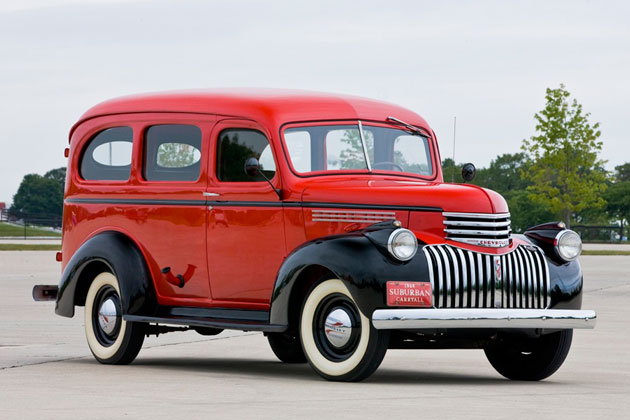
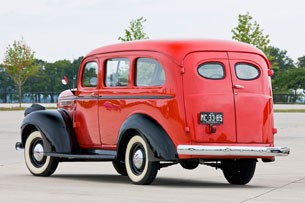
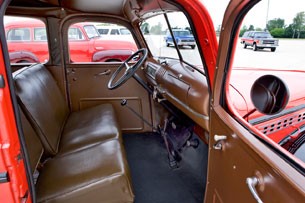
1951 Chevrolet Suburban
This was a holdover of the third-generation Suburban that debuted in 1941, prior to World War II, and cost just $837 at the time. Its three-speed manual transmission was floor-mounted, and its inline-six rated at just 90 horsepower, though with 165 lb-ft of torque, was still a contemporary towing machine. It's worth mentioning that Suburbans from this era did not have four-wheel drive, which didn't come along until 1957. The one thing that really caught our eye about the 1946 was its polished wood floor, which was just beautiful. The steering wheel, however, felt like it came from a bread truck, with a circumference like an extra-large pizza. Seats had exposed metal frames, which seem shocking in this era of side-impact airbags.
First and Second Generation
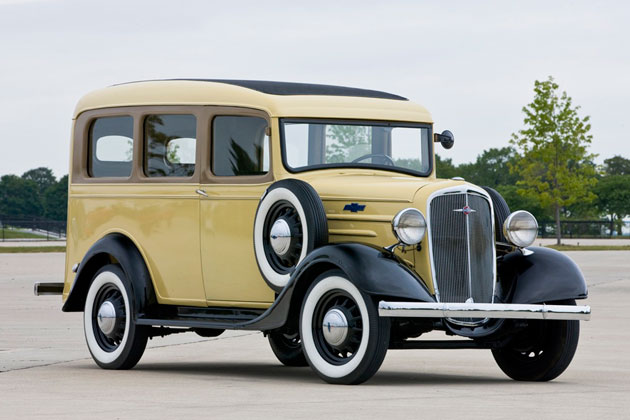
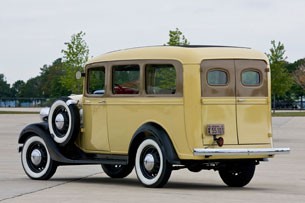
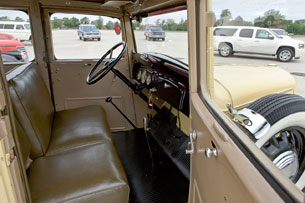
No second-generation vehicle was on hand, but Chevy did have a 1936 model, an "original" Suburban. We weren't able to drive it, but we did get a good look at the interesting way it was built. You could actually see exposed nail heads where the sheet metal had been bent around the wood frame and nailed in place. GM claims the Suburban was the first steel-bodied station wagon built on a truck frame. This 1936 model was the first with hydraulic brakes, and was powered by a version of the original Stovebolt Six that made just 79-horsepower.
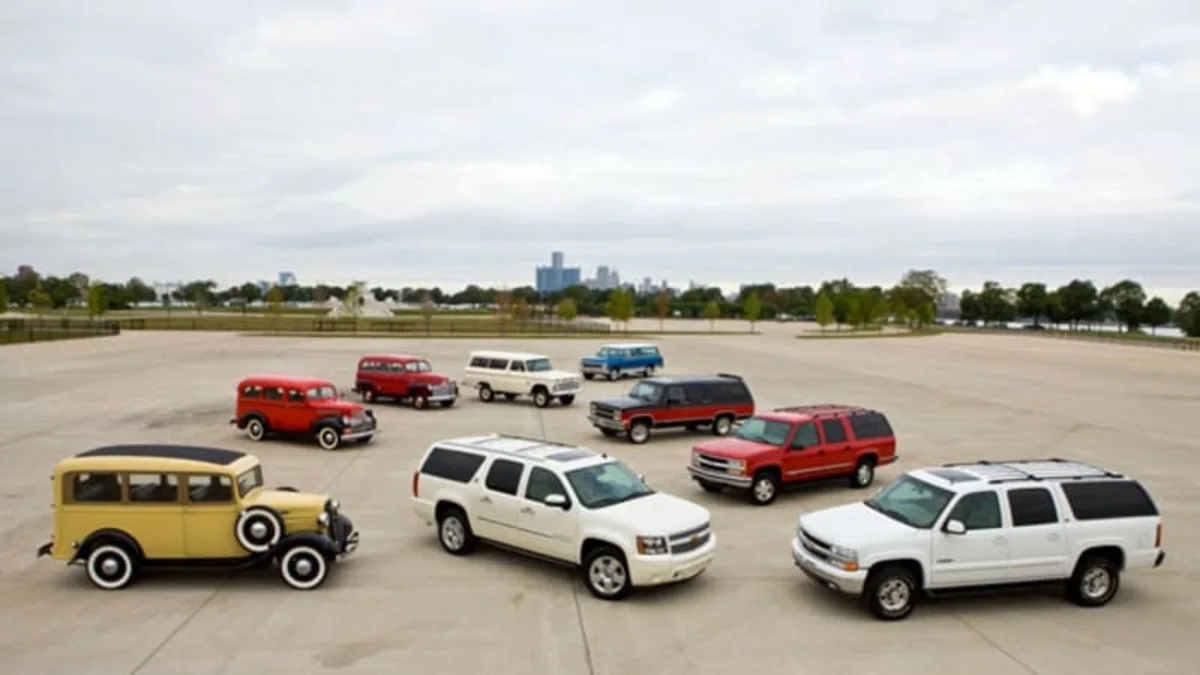



Sign in to post
Please sign in to leave a comment.
Continue